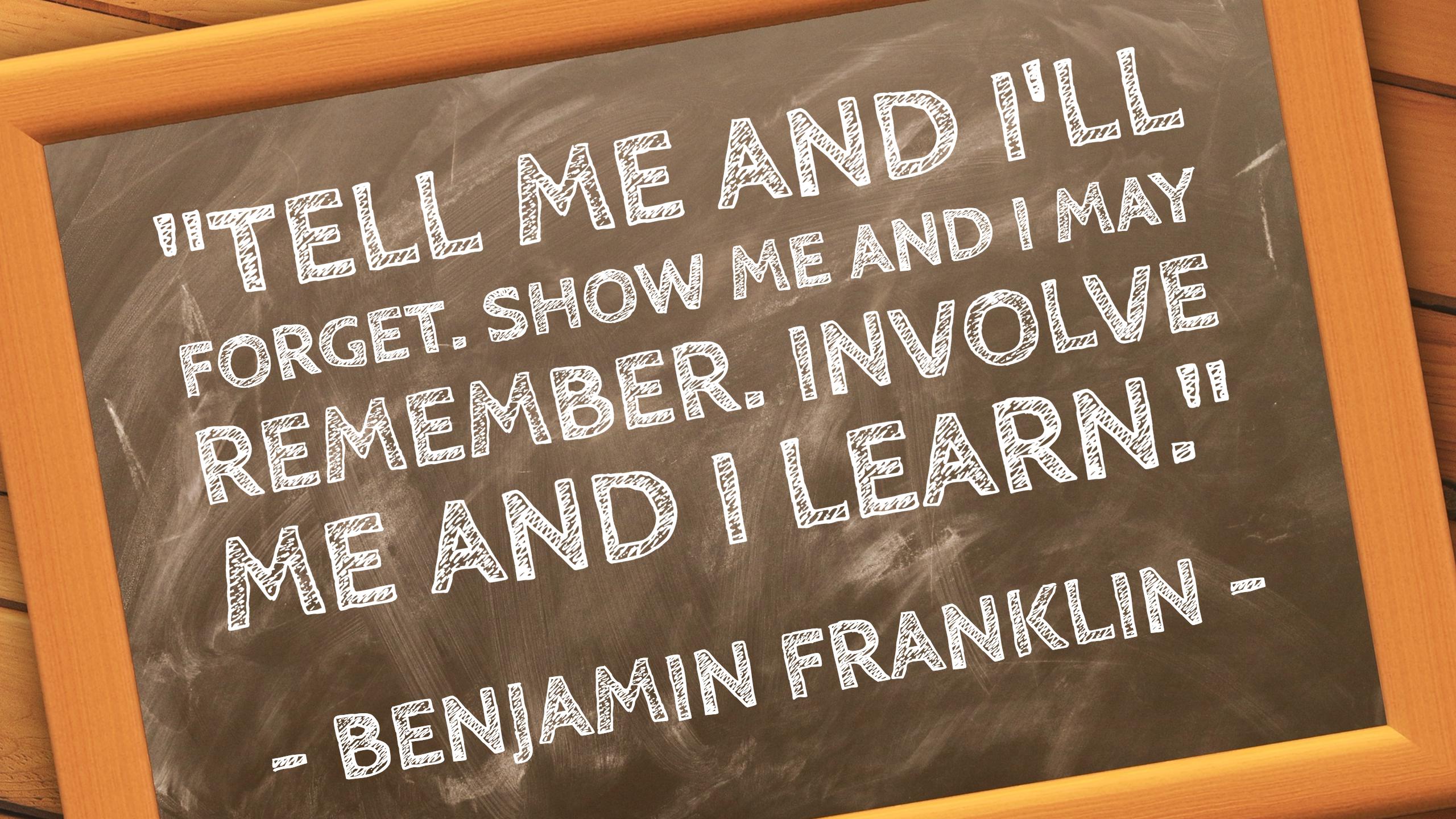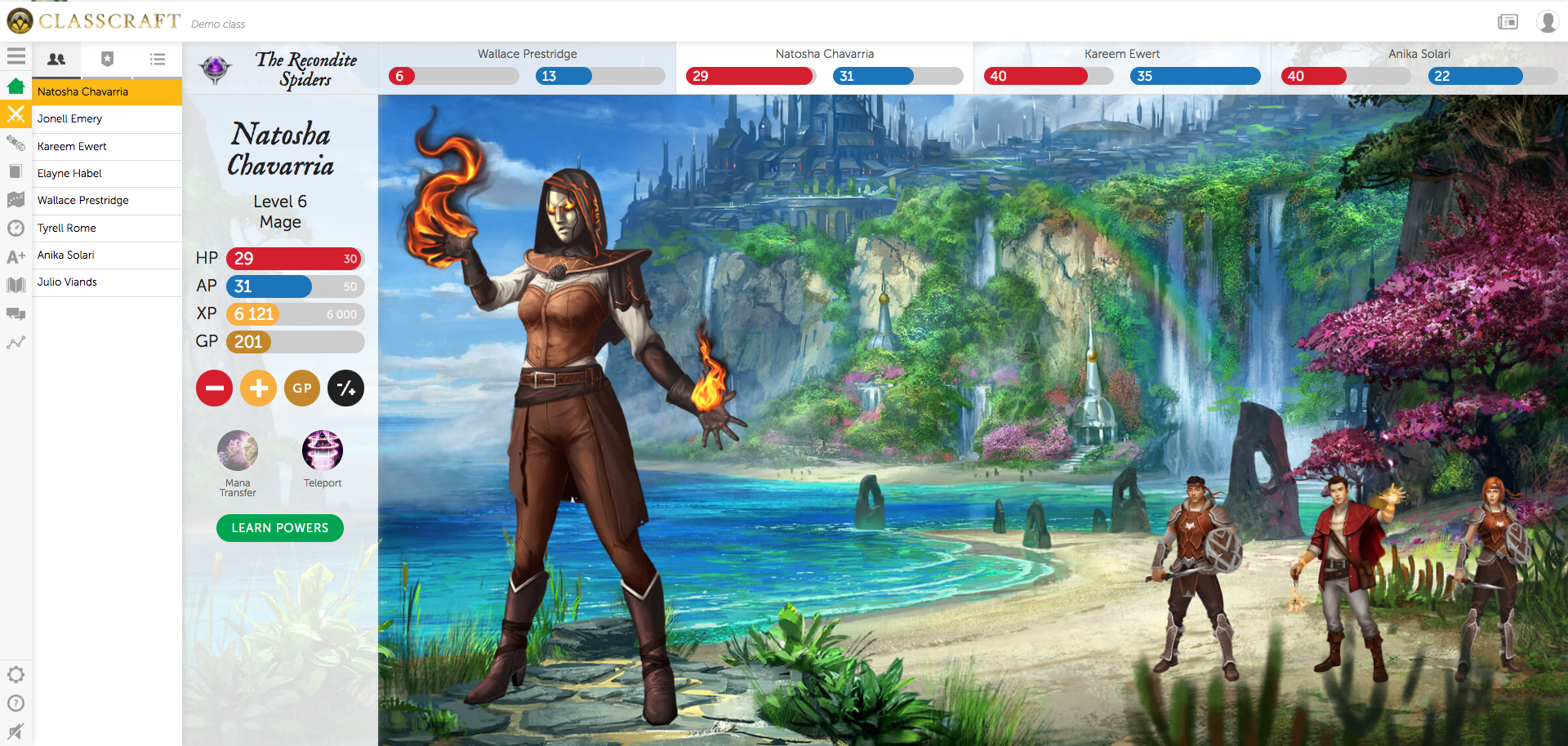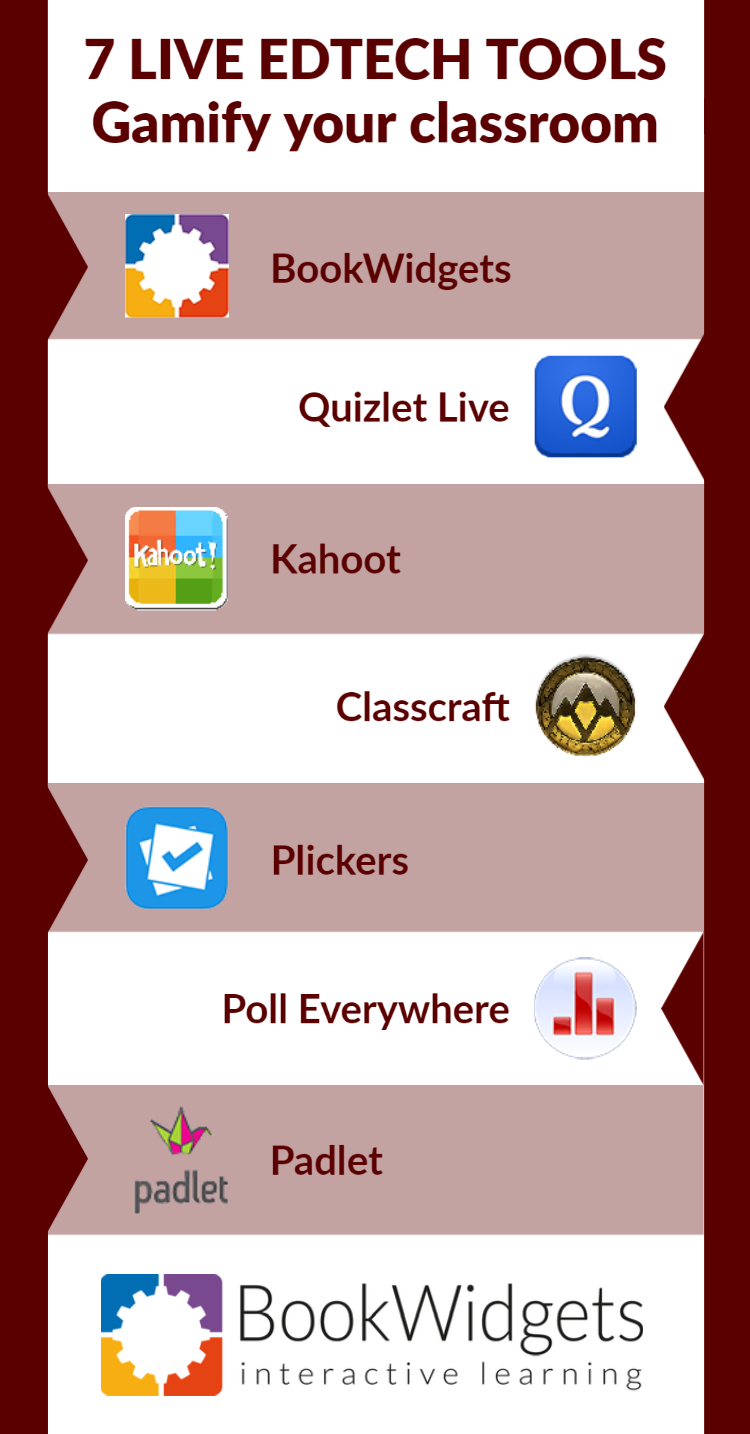7 Amazing live edtech tools to gamify your classroom
 Lucie Renard —
Lucie Renard —
Dreaming, staring and “What did you say?”. A familiar situation in every classroom. Students are often not paying any attention and are mentally wandering off too quickly. So how do you keep their attention?
The answer is: integrating technology into education. This will positively impact your teaching. No worries, technology doesn’t just mean incorporating education games, it goes far beyond.
In this blog post I’ll talk about some amazing live tools that keep your students motivated. Live means at that moment. Students have to stay focussed on the game (or exercise), and play (or think) like their lives depend on it.
Awesome live edtech games that engage students
1. BookWidgets
 Bookwidgets offers the opportunity to digitalize your lesson content, you can create Quizzes, Crosswords, Bingo, and so on. By incorporating these interactive elements, you can transform your lessons into dynamic and engaging experiences.
Bookwidgets offers the opportunity to digitalize your lesson content, you can create Quizzes, Crosswords, Bingo, and so on. By incorporating these interactive elements, you can transform your lessons into dynamic and engaging experiences.
The live monitoring feature of BookWidgets enables targeted support for your students. With real-time progress tracking, you can effectively monitor their learning journey. This allows you to identify students who may require extra challenges or assistance. By integrating live monitoring into your teaching, you can foster a dynamic and personalized learning environment that caters to the unique needs of each student.
Would you like to learn more about it? Check out this turorial.
2. Quizlet Live
 Quizlet Live lets your students work together in order to find the right word or definition to the description. It’s made for practicing terms and definitions.
Quizlet Live lets your students work together in order to find the right word or definition to the description. It’s made for practicing terms and definitions.
There’s something tricky though: you can’t see what descriptions your teammates have. If someone on your team makes a mistake, you have to start over again. Teams battle each other in order to be the first team to reach the finish line.
Take a look at Quizlet’s website demo:
In order to use Quizlet live, you need at least 12 descriptions or terms. Quizlet live is the newest feature of Quizlet. Besides that, Quizlet allows you to take quizzes in other forms like Flash cards, the gravity game, tests, matching games end spelling exercises. These are also fun, but not live and less competitive and activating.

3. Kahoot
 Probably the most well known example of a live edtech game, Kahoot engages students. Moreover, it’s competitive. That’s what students like. They want to win.
Probably the most well known example of a live edtech game, Kahoot engages students. Moreover, it’s competitive. That’s what students like. They want to win.
Students have to tick off the right answer as quickly as possible. For every right answer they score points. If the answer is correct and the student was very fast to answer, the student gets more points than a slow student.
Why is Kahoot so much fun? It’s not only fun for students, it’s also fun for teachers. It’s easy to use, and it gives you a nice overview of your students’ answers. You can see what questions still cause problems and which students don’t quite understand the lesson material.
Students also love it, because they can use their smartphone, tablet or computer. They don’t really need to type the answers. They just have to tap the engaging colors on their screen.
If you want your students to collaborate more, Kahoot’s team mode is the answer. One device, more students. Are they able to collaborate and still answer really quickly AND correctly?
Kahoot also enables you to start discussions and do surveys.
4. Classcraft
 I’ve just discovered this amazing class management game! This is probably the most awesome game and class management solution I’ve ever seen. I’m a total fan of the fantasy world, so why not just use your imagination in the classroom?
I’ve just discovered this amazing class management game! This is probably the most awesome game and class management solution I’ve ever seen. I’m a total fan of the fantasy world, so why not just use your imagination in the classroom?
Classcraft engages students to live by your class rules in an interactive way.
Students can create their own avatars that have special powers. They play in groups. If someone ignores a deadline, it may fire back on the whole group. Working together and having respect for each other is very important.
Students can gain different points by playing by the classroom rules. For example: students who help other students receive a certain amount of points. When they have enough points, they can use a power like: the “warrior” can eat in class”. They can also lose those points by not playing by the rules. If they lose all their points they get a sentence like: bring a treat for the whole class or hand in an assignment a day early.
You can choose every power and sentence. Classcraft also has a timer and a stopwatch available, as well as a quiz tool where the avatars have to battle a “boss”. In order to beat the boss, they have to get the answers right.
You can choose how long you play the game. It can be an entire school year or just a few months.

5. Plickers
 Plickers is a real-time assessment tool and is both an online tool and a classroom tool. It lets your students share their thoughts in a glance, anonymously. You can see if your students understand your lesson topics. All students get to answer the questions, which makes them participate more. Plickers is very handy for schools without a device policy.
Plickers is a real-time assessment tool and is both an online tool and a classroom tool. It lets your students share their thoughts in a glance, anonymously. You can see if your students understand your lesson topics. All students get to answer the questions, which makes them participate more. Plickers is very handy for schools without a device policy.
How does it work? Using Plickers requires a smartphone app and the Plickers cards. Go to the website to get them. The standard cards are free.
You ask a multiple choice question and the students answer it by showing the cards. The questions you ask must be inserted on the Plickers website. Each side of a card represents a question letter (A,B,C or D). When all cards are raised, you can simply scan the card with the Plickers app.
Plickers can be used in classrooms K-12 to university and is a great tool for formative assessment, warm-ups, exit tickets and lesson refreshers.
6. Poll Everywhere
 Some people say that Plickers and Poll Everywhere are practically the same. Okay, you can do polls with both apps, but that doesn’t mean that it stops there.
Some people say that Plickers and Poll Everywhere are practically the same. Okay, you can do polls with both apps, but that doesn’t mean that it stops there.
Where Plickers needs cards and a scanning app, Poll Everywhere needs devices.
Poll Everywhere is a voting system, completely reinvented! As a teacher, you have to set up a question on the web interface. Students can see it on their PC, tablet or mobile phone.
Questions can be polls, but also open ended questions like “give me a tip to improve my teaching”.
Students can respond by using the web app, a text message or even Twitter. You get instant audience feedback.
Another fun feature is the ability to make nice charts of the answers. You can easily get started analyzing the results.

7. Padlet
 With padlet you can create an online board that you can share with every student or teacher you want. Just give them the link. Padlet allows you to insert ideas anonymously or with your name. It’s easy to use and very handy.
With padlet you can create an online board that you can share with every student or teacher you want. Just give them the link. Padlet allows you to insert ideas anonymously or with your name. It’s easy to use and very handy.
Whoever has the board open on its computer, tablet or smartphone, can see what’s on it and what everyone is writing. Teachers can use it to do some live brainstorming on a topic.
You don’t need to be a teacher to use Padlet. I also use it for my family’s Christmas lists. Padlet gives and online solution to replying emails over and over again and missing important changes.
Wrap up
When it comes to capturing and maintaining students’ attention in the classroom, live tools can be a game-changer. Which edtech tools have you already tried out? Let us know on Twitter. Would you like to get started with BookWidgets or would you like some additional inspiration, join our Teaching with BookWidgets Facebook group.
And me? My name is Lucie, say hi👋 on LinkedIn.



